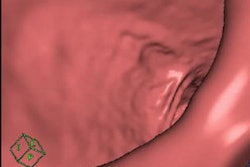
The U.K. Royal College of Radiologists (RCR) has released updated guidelines for the provision of teleradiology, noting that the latest version contains standards for the sharing of imaging data and for outsourcing reporting of images outside local healthcare organizations.
An update of the college's 2010 standards, the document's main aim is to ensure the use of teleradiology contributes to satisfactory outcomes for patients. It can be downloaded for free from the RCR website.
According to a foreword to the report, "The standards set out in this document are those that the RCR believes best serve the population of the U.K. and should be taken into account by U.K. healthcare providers and commissioners when considering outsourcing image reporting to teleradiology companies."
The RCR set out four standards for the practice of teleradiology:
- There should be clear and transparent systems in place for rapid, secure transfer and review of images and, where necessary storage of patient data.
- Reporting must be to the same standard independent of where and by whom the data are reported.
- The same person should interpret the examination and issue the report to the referring clinician and should be clearly identified, with the results communicated and integrated into the base hospital's RIS, PACS, and electronic patient record in a timely manner.
- Teleradiology should be part of an integrated radiology service, and be subject to the same governance framework as the rest of the service, with all participating radiologists working within a clearly documented quality assurance framework in line with RCR guidance.
The RCR also emphasize that teleradiology should enhance and complement diagnostic services and that there must be no overall detriment to the quality of diagnostic imaging services. Furthermore, teleradiology should not undermine normal clinical workflows within the radiology department or healthcare organization. There should also be an uninterrupted flow of data from the point of imaging request to the acknowledgement of receipt of the imaging report by the requesting clinician.
"These standards reflect the RCR's view that the patient should benefit from the same quality of care as in the optimized hospital setting," the authors wrote. "The safety and well-being of the patient should be the first priority and secondary incentives, financial or otherwise, must always be subsidiary."
The new guidelines also touch on medicolegal considerations, European regulatory requirements, and the need for mandatory professional indemnity/insurance.
"Attention to the guidelines and standards outlined in this document will ensure the sustainability of local diagnostic imaging services and maintain high-quality standards of reporting for patients," the RCR wrote.
The guidelines can be found on the RCR's website by clicking here.



















